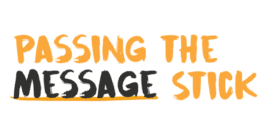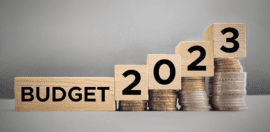What you should leave behind in your next political meeting

5 July 2021 at 4:58 pm
Which documents are you taking with you to your next big political meeting and which are you leaving behind? Neil Pharaoh shares some insights.
So you have lined up the meeting, the attendees are all in order, and you are on your way to Canberra (or Spring Street, Macquarie Street or virtually these days) for a meeting with a MP or minister. What next? And what about the documents to talk to and leave behind? This article steps you through some thoughts, ideas and insights around the best leave behind documents, and what not to do.
Let’s start with what not to do…
Don’t give them your annual report, or even an extensive detailed brochure – it will never get read. While it may float around the office for a day or two, it is ultimately a waste of space, printing and to be honest the environment.
Generally speaking, do not bring along anything you have “prepared earlier” – chances are it is designed for a different audience and not an MP, senator or minister. So, all those detailed policy documents? Leave them at home. The extensive organisational history? That stays home too. If these are wanted, you can always follow up by sending them through later.
Don’t take reams of paperwork either. Keep things simple, relevant, and easy to access during a conversation.
So, what should you bring to a meeting?
A nice sharp one or two pages about the organisation, which provides high level answers to the questions of who you are, what you are about, why you exist, where you operate, and how you do your work. Great organisations will answer each of these questions, compile their impact and outcomes into an infographic, and include a nice case study – all in two pages.
It’s important to make it visually appealing and, here is the kicker, genuinely specific to the person you are meeting. That could mean aligning data, statistics, case studies, or projects to their portfolio, electorate, committee involvement, or interests. Making it specific means that your one pager is unique and considers the framing and viewpoints of the party you are meeting, as well as how it might align to their priorities or agenda. Feel free to use bold, italics and underline, and even stretch the margins if you have too – but do not make it more than two pages… ever.
If you have a very specific project that you want funded, supported or engaged with, you can do a second two pager which answers the same questions but is specific to that project. But no more than that.
A couple of other things you might like to consider for your meeting though. Bring business cards, they are still used and are a nice thing to exchange. A suitable branded promotional item (if you have one) is also often appreciated – but not tacky or useless generic stuff – it genuinely has to represent your organisation (kudos to Surf Life Saving Australia who give MP’s in their friendship group a framed lifesaver cap for instance). Remember to take photos, and ask the MP or minister’s advisor to follow your social media afterwards. Take note of the names and roles of the people you meet and build rapport with staffers and support team, as it will be them who you will often work with for additional information and insights down the track.
One final reflection – which follows working with a client last week who secured over 50 meetings (or one quarter of Federal Parliament) in one sitting period – remember that MPs, ministers and senators are in back to back, often boring meetings, where everyone is asking, complaining or berating them for something. Make your 30 minutes or hour unique and memorable in some way – I might go as far to say that you should spend more time thinking about how to make it unique, memorable and positive, than you should on the documentation.
About the author: Neil Pharaoh has spent most of his voluntary and professional life in and around social purpose organisations, government, public policy and advocacy. Neil has been behind many leading social policy and advocacy campaigns on gender rights, equality, medical research and education, and ran for Parliament in Victoria in 2014 and 2018. Neil is co-founder and director of Tanck, which focuses on better engagement with government, and regularly runs workshops and advocacy sessions and advises leading social purpose organisations on their government engagement strategy and systems.
Happenings on the hill is a fortnightly column focusing on all things politics, policy, campaigns and advocacy. Stay tuned for updates around political trends and elections, lobbying and advocacy news, and hints, tips and ideas on government engagement that are specifically written for the social purpose/for purpose sector.
If you have any ideas, suggestions, tips or questions, please feel free to email Neil Pharaoh at neil@tanck.com.au or reach out to him via social media at LinkedIn, Twitter, Instagram and Facebook.







